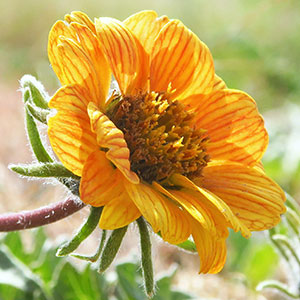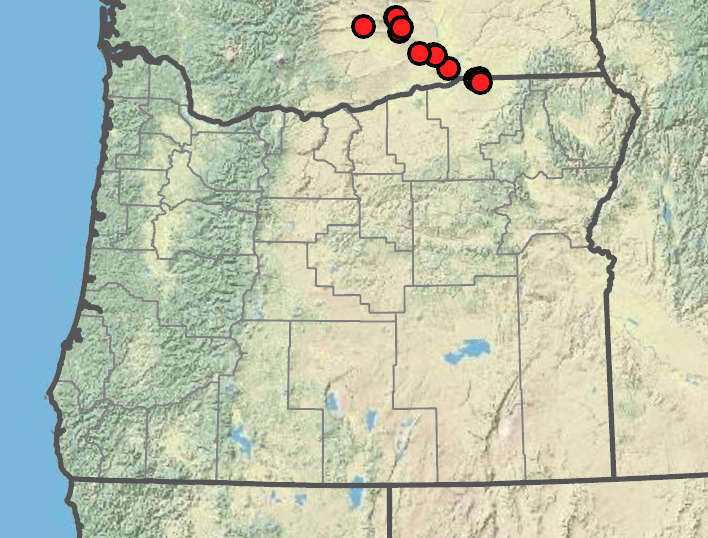Balsamorhiza macrophylla
Balsamorhiza rosea
large-leaf balsamroot
rosy balsamroot
up to 35 cm, tomentose; from single taproot.
5–15 cm, villous-hirsute to villous below heads; from single taproot.
lanceolate-oblong, 1-pinnately divided;
pinnae toothed, with teeth only on lower margins;
surfaces tomentose;
basal leaves in 1–few rosettes;
blades 12–22 × 6–8 cm;
pinnae 10–36 mm wide;
petioles 7–20 cm;
cauline blades 1.5–5 × 0.3–0.9 cm;
petioles 6–9 cm.
oblong-lanceolate, pinnately lobed from ¼ to ??? to midrib, occasionally some leaves undivided;
margins toothed to crenate with pointed teeth;
surfaces villous-hirsute; more densely so abaxially than adaxially;
basal leaves in 1–few rosettes;
blades 2.5–7 × 1.5–2.8 cm;
pinnae 6–12 mm wide;
petioles 1.5–4.5 cm;
cauline leaves in 1 opposite pair or 0;
blades 0.7–2 × 0.3–1 cm;
petioles 3–4 cm.
with 1 terminal head.
with 1 terminal head.
14–18 × 25–30 mm.
10–13 × 20–25 mm.
14–16, yellow;
rays 35–40 × 8–11 mm.
~13, yellow when young, turning from yellow to pink or red;
rays 10–15 × 7–8 mm.
~9 mm.
~6 mm.
ovate-lanceolate, 20–25 × 5–6 mm;
tips acuminate, tomentose.
linear to linear-lanceolate, 12–15 × 1–2 cm, villous.
8–9 mm, glabrous.
5–6 mm, strigillose.
10–12 mm.
11–13 mm.
=100 ± 2.
=38.
Balsamorhiza macrophylla
Balsamorhiza rosea
Dry, open areas. Flowering May–Jul. 700–1400 m. BW. ID; east to WY. Native.
True B. macrophylla is a decaploid centered on the Wasatch Mountains in Utah and Idaho. The plants in Oregon and western Idaho are also high polyploids, but they differ morphologically from classic B. macrophylla in their denser pubescence and the shape of their leaves. These eastern plants have been given the name B. macrophylla var. idahoensis. However, further study will likely show that they have a different parentage than B. macrophylla s.s. The specific epithet “macrophylla” means large-leaved, as the leaves are much larger than those of the other members of section Balsamorhiza.
Open, rocky areas. Flowering Apr–May. 300–400 m. Col. WA. Native.
Balsamorhiza rosea occurs almost entirely in Washington, with one known locality in Oregon.
Abigail (Abby) Moore
Abigail (Abby) Moore




